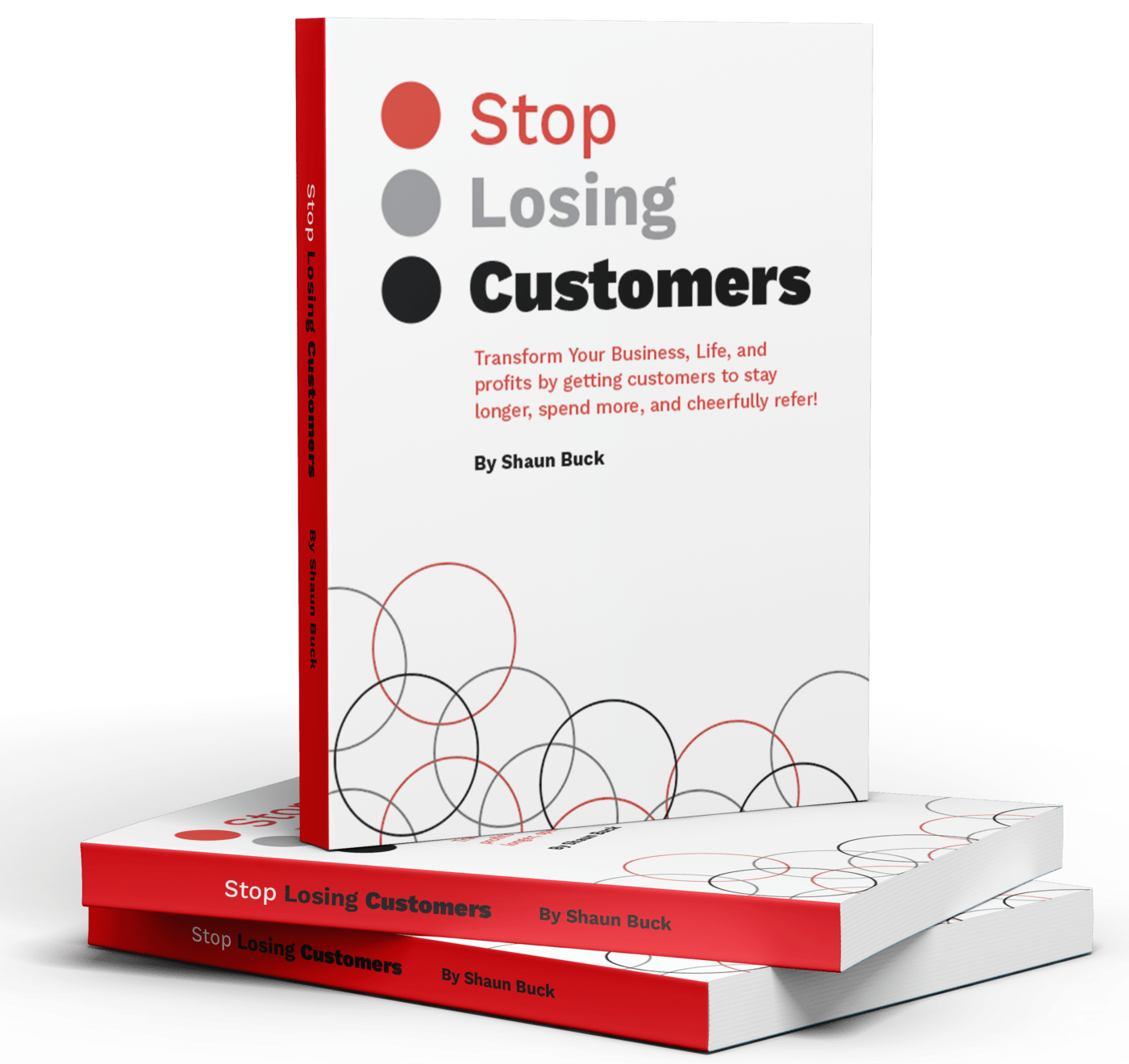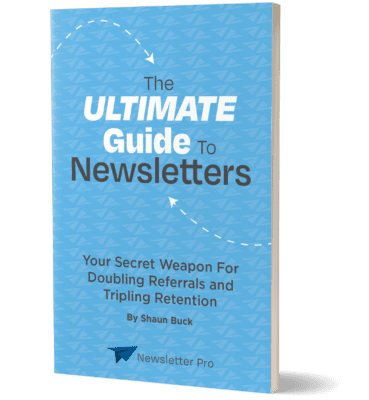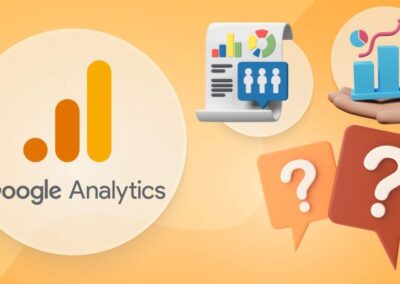When it comes to personalization in marketing, it would be fair to say that billboards, TV ads, and newspaper ads could not target specific demographics. Instead, marketers got their message out to as many people as possible, regardless of whether they were qualified, potential buyers. But all of that started to change in the 20th century when personalization in marketing became a necessity.

What Is Personalized Marketing?
Mailchimp defines it this way:
“Personalized marketing is when you tailor your marketing based on the data you’ve collected from your contacts. This includes interests, shopping preferences, purchase history, and more. When you use this data to customize the content your contacts receive via email, ads, and other platforms, you’re using personalized marketing.”
In other words, personalized marketing is based on the tastes and preferences of individual consumers. Rather than create advertisements that appeal broadly, companies that want to engage in personalized marketing make multiple ads or marketing materials for different audience groups or potential customers.
So, what are the roots of personalization in marketing, and how did marketing go from being a one-size-fits-all business to one that prioritizes individual tastes and habits? Well, it goes back to the beginning of marketing itself.
The Roots Of Personalization In Marketing
While it’s true that mass-scale personalized marketing wasn’t possible until the last 200 years, personalization in marketing has been a concern for as long as people have been marketing to each other.
For example, if you were running a hat shop in 1875 and you overheard a customer telling their spouse they didn’t like the color blue or flat-brimmed caps but love the color red and top hats, you would be foolish not to offer them a red top hat if you had it. Or if you were a baker in 1952 and you overheard a potential customer say how much they hated chocolate and loved strawberries, you would want to offer them a strawberry cake sample, not a chocolate cake sample.
In other words, a good marketer will always use the information they have to give the customer the best offering possible. That’s nothing new.
Our capacity to collect data and use it to give each consumer an individualized experience is new. But how did we get from eavesdropping to gather consumer information to keeping detailed records of individual consumers? In that sense, the journey to advanced personalization in marketing started in the 1800s.
Richard Tedlow’s book, “New and Improved: The Story of Mass Marketing in America,” details the four stages of consumer targeting in the United States, and the first formally organized personalization began before the 1880s with “fragmentation.”
“Fragmentation” began when the U.S. economy was separated into different regions with local retailers that would serve an area. At this time, the capacity for personalization in marketing depended heavily on what individual retailers knew about their region’s customers. While this was a great marketing opportunity for local mom-and-pop retailers, who could tailor their offerings to customers they saw frequently and learn their individual tastes, it was not scalable.
Then came “unification” or “mass marketing” from the 1880s to 1920s. In this stage, advanced transportation systems opened parts of the economy up to new buyers who previously had been limited to their local markets. The term “unification” comes from the economy’s progression from a fragmented series of regions to a larger economy. At this stage, personalization in marketing was nearly impossible without the resources to collect individualized information on consumers, and manufacturers started to emphasize standardization and uniformity. This translated to more uniform, broadscale marketing as well.
From the 1920s to the 1980s, broadscale personalized marketing materials entered advertising. This stage, known as “segmentation,” was made possible by the increasing marketing size in the U.S., and manufacturers and marketers started to see the value in catering to individual needs. Instead of focusing on standardizing products, they produced different models of items o fit a variety of consumer needs. Marketing was also differentiated during this time to cater to consumers based on broad categories like lifestyle factors, demographics, and socioeconomic levels.
“Hyper-segmentation” or “one-to-one marketing” began after the 1980s. This was when marketers started communicating their message to narrower market segments with a more specific interest in their products, which led to our modern marketing strategies.
The Modern Roots
Leonard Berry, a marketing professor at Texas A&M University, was the first to coin the term “relationship marketing” in the early ’80s. Since then, personalization in marketing has become necessary for brands that want to compete in the modern market. Through the use of data collection and organization, marketers are now able to tailor their offerings based on a variety of factors like demographic, interests, location, and more.
Companies collect data in a variety of ways. Many websites use cookies to create user profiles for consumers. Also known as internet cookies, HTTP cookies, and browser cookies, these files are stored on your computer and communicate specific information about your browser history, preferences, and personal information. Companies then collect and use this data to provide personalized marketing experiences for each individual. This explains why the ads you see while browsing the internet are often suspiciously specific to your personal tastes and preferences.
Marketers also directly market to you based on information you volunteer. For example, you might be on several segmented email or mailing lists. In order to properly segment you, a business might ask various questions based on your demographics, location, interests, and more. This allows them to split their mailing offers based on which groups are most likely to be interested.
But how exactly do these personalized marketing tactics work, and what are the benefits of each for businesses? Let’s start with email marketing.
Email Marketing
As previously stated, the personalization in marketing done through email is based on information consumers freely volunteer. Once companies have this information, they can use it to build lists segmented by relevant categories and tailor their ads accordingly.
For example, if a bookstore sends out emails regularly to their customers, they may ask for information like book preferences or interest in their book club when people are signing up. They can then segment this list by interest category and ensure they send relevant information to each user.
If Stacy signs up for the bookstore’s email list and checks the boxes saying she’s interested in their book club and horror novels, then she will get the segmented emails for the book club and horror categories. If Juan does not click the box for interest in the book club and says he likes fantasy novels, then he will only be on the list to receive relevant information for the fantasy list.
Once companies have this information, consumer protection laws prevent them from selling it to third parties or knowingly giving their lists to other businesses. While the same cannot be said for direct mail, many of the same personalization tactics still apply.
Direct Mail
Unlike email, direct mail can be sent to someone without expressed permission. While many businesses ask consumers for information to help them better segment their lists, some will use direct mail to target potential consumers based on location.
For example, if a new restaurant is opening up in an area, they might want to mail locals an invitation to their opening night. All they need is an address so it can be targeted to a certain radius.
However, without specific information from customers, it’s nearly impossible to target different audiences based on interest, which is why many companies engage in similar data collection efforts for both their digital and print campaigns in order to offer a more personalized experience for readers.
However, this is very different from targeted ads, which do not require consumers to explicitly volunteer information, but rather collect it automatically based on their online profile.
Targeted Ads
Targeted ads provide an advanced level of personalization in marketing and come in a variety of forms. These forms include but are not limited to search ads, display ads, and social media ads. Here is more on the benefits of each.
Search
If you’ve ever used Google before, then you have likely interacted with a search ad. These advertisements appear at the top of the page when an inquiry is typed into a search engine and are fully tailored to match the keywords found in the user’s question. In other words, the ad aligns with the current needs and interests of the customer.
When setting up their ads, companies will have to bid on different keywords based on what best describes their products and services. A Toronto bakery might bid on keywords like “best cake in Toronto” or “English buttercream cupcakes.” They will then compete with other businesses that have selected the same keyword. Google ranks ads based on the amount businesses are willing to spend, but also how relevant their ad is to the selected keywords. So, even if an art gallery is willing to pay thousands of dollars for the keyword “cleaning company,” Google can determine if the ad is irrelevant based on how many consumers ignore the ad or click away from it as soon as they open it. If Google determines it irrelevant, the ad will always be ranked low.
Here’s an example of how search ads work in a practical sense. If Jane types “best Christmas presents for boyfriend” into Google, the first thing to appear will be businesses that bid on relevant keywords in her inquiry. She might see ads for retailers, bakeries, or any other brand Google has deemed relevant to the query based on data. The search ad will also appear relevant to the query, with copy stating the site is a great place to find Christmas gifts or even offer a unique promo code.
These ads also factor in a user’s location. For example, if Glen types “auto repair shops near me” into Google, the first thing he is going to see are search ads related to his inquiry. If he’s located in San Francisco, Google will tailor the results to only show relevant businesses in his area.
Display
Unlike search ads, display ads appeal to certain audiences based on their demographics, not their current search (although past search history may play a role when setting display ads). Instead of using keywords, display ads are based on a customer’s past online behavior, expressed interests, and demographics. These ads appear in the designated ad space on websites at the tops or along the sides and rely heavily on the visual appeal of their ads to attract clicks.
For example, if Tabitha consistently searches for cat food, she might start seeing banners and display ads for cat food brands. Or she might see related ads for cat toys or products. That’s because the cookies in her browser allow the sites she is using to build a relevant profile on her so they can tailor their ads specifically to her needs.
Social Media Ads
Social media ads are a fantastic way to target specific customers based on their relevant demographics. This is especially true of Meta ads, which can be set up to take into account a potential customer’s location, homeowner status, interests, and more.
These ads can even use the information from a member’s Meta browsing history and their activity on third-party sites. For example, if A.J. is looking for a computer repair shop on a third-party site Facebook has access to, he might start to see relevant ads on Facebook or Instagram.
The Effects Of Personalization In Marketing
The effects of advanced personalization in marketing are widespread across the market. With more options than ever for crafting an individualized user experience, no wonder nearly all businesses have adopted a personalized marketing strategy in one form or another. Now, you will be hard-pressed to find a company that doesn’t use search ads, social media ads, or segmented email marketing — and it’s no wonder why. The tools are so advanced now that they don’t have to guess about a person’s interest level; they can market directly to their ideal customer based on their interests.
And that’s a very powerful thing…
If you would like to learn more about how newsletters can add a personal touch to your marketing strategy, you can sign up to receive a free copy of Shaun Buck’s book, The Ultimate Guide to Newsletters, below.






